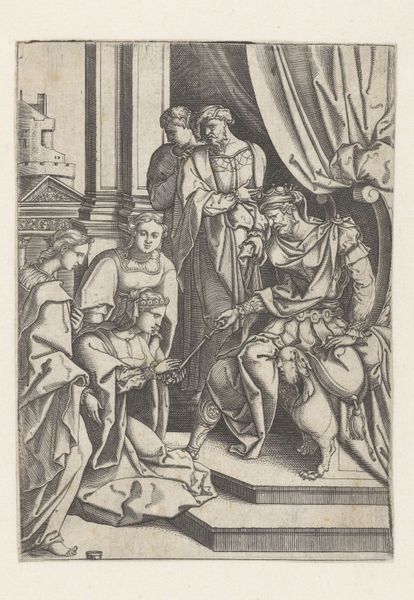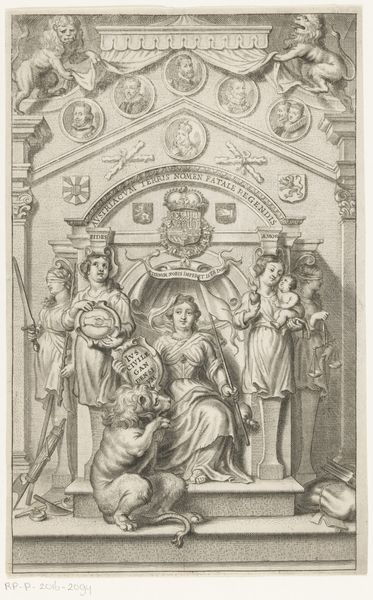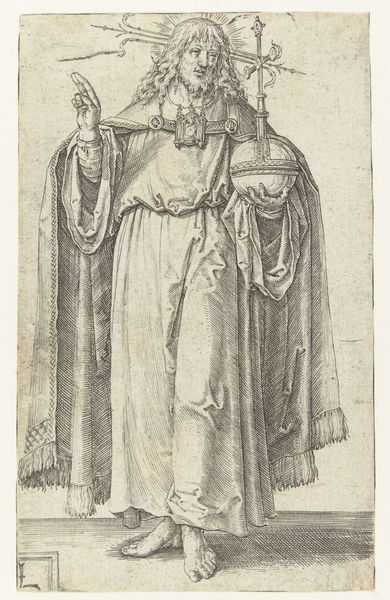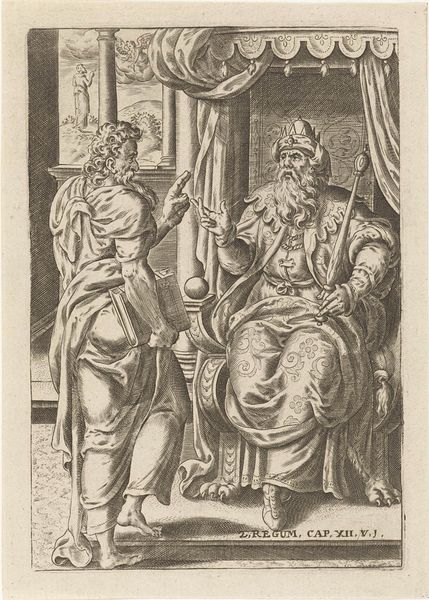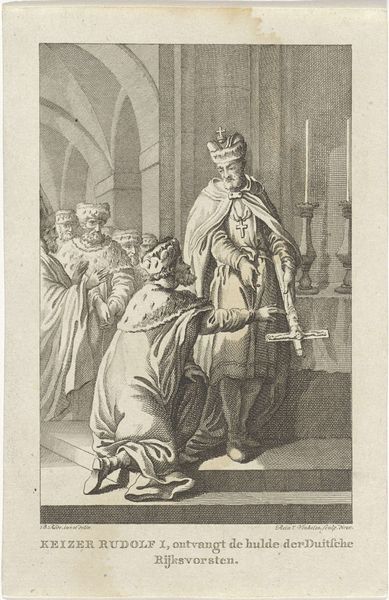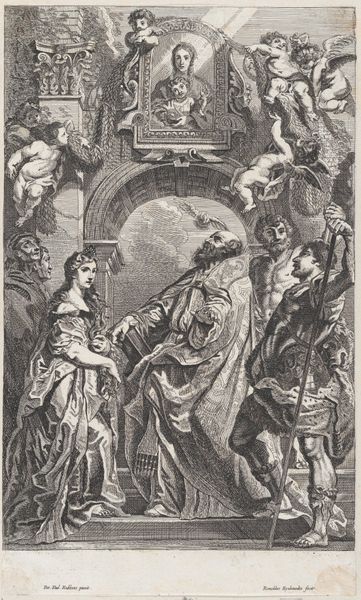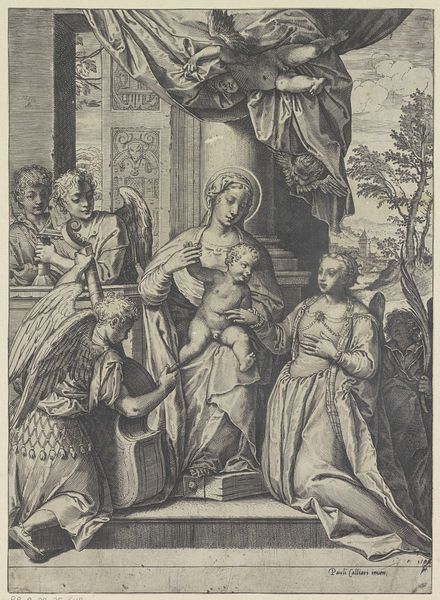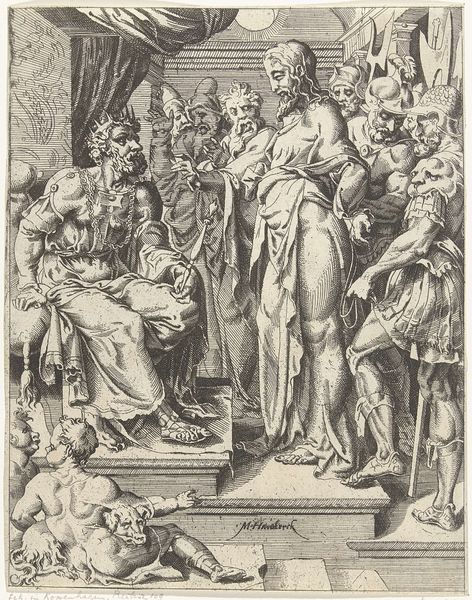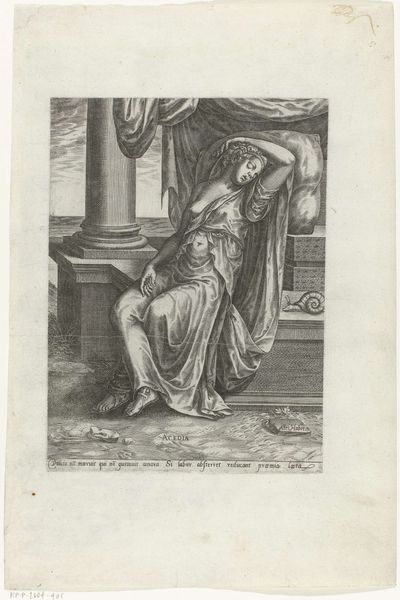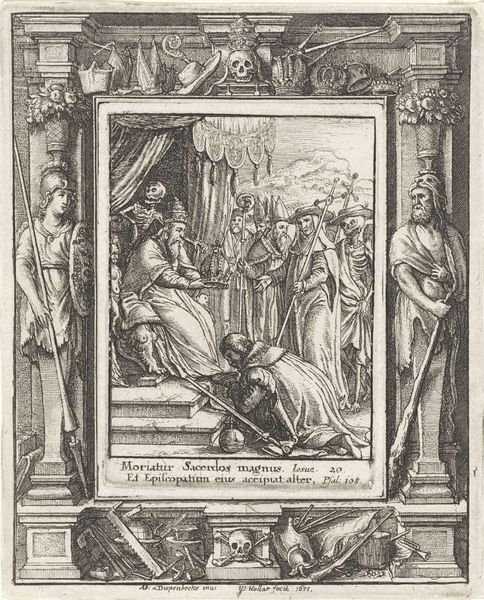
print, engraving
#
portrait
# print
#
old engraving style
#
mannerism
#
personal sketchbook
#
history-painting
#
engraving
Dimensions: height 135 mm, width 99 mm
Copyright: Rijks Museum: Open Domain
Editor: This is Magdalena van de Passe's "Heilige Helena," an engraving from between 1574 and 1637, currently at the Rijksmuseum. There's such formality in the presentation – Helena is enthroned, and her gaze is so direct. How do you interpret this work within its historical context? Curator: That formality, I think, is crucial to understanding the power dynamics at play here. Consider the context of the Counter-Reformation and Mannerism, prevalent during Van de Passe's time. This print wasn't just a portrait; it was a piece of religious propaganda. Helena, as the mother of Constantine, represented the imperial endorsement of Christianity. Do you notice how her regal pose and accoutrements legitimize both her status and, by extension, the Church’s authority? Editor: I see what you mean. It's not simply about commemorating a saint but about making a statement of power. The architectural backdrop, with its Roman grandeur, also reinforces that connection to imperial authority. Is that architectural rendering accurate for its time? Curator: Accuracy wasn’t necessarily the aim. These artists aimed to project a particular image, one linking spiritual and earthly authority. Consider how prints like this would have circulated. They weren’t just viewed in isolation; they reinforced and were reinforced by sermons, religious ceremonies, and the general political climate. The "old engraving style" as it's labeled now evokes a classical tradition for educated and influential audiences, no? Editor: So the print becomes part of a larger system of visual and political persuasion? Curator: Precisely. Think about the intended audience: members of the clergy, wealthy patrons, or perhaps even royalty themselves. What kind of message were such audiences intended to derive? Editor: I had never considered it that way. Now I can see that this portrait is a deliberate attempt to shape perceptions of power and religion. Curator: Indeed. It's a valuable reminder that art rarely exists in a vacuum. Everything from artistic style to the distribution of imagery carries its socio-political weight. Editor: Absolutely. Now, whenever I look at a work like this, I will consider the broader social, political and religious situation and the place of images within such power dynamics.
Comments
No comments
Be the first to comment and join the conversation on the ultimate creative platform.
